For the last few weeks I have been spending most of my free time in Rousillac. To be more specific, I have been exploring a stretch of “bush” bordering the Rousillac Swamp – a mixture of secondary forest, swamp edge, and semi-abandoned agricultural plots. It may not be a virgin tropical forest or some other untouched natural environment but here I have the advantage of time and safety and I can freely explore to my heart’s content. It is also surprisingly rich in wildlife.

My initial intention, I must admit, was to start exploring the mangrove swamp located here. However it is still a bit too waterlogged and so poking around in there will have to wait for a few more weeks. Specifically, I have been itching to start using a new trail camera (see here for more information on trail cameras) with the hope of photographing a Crab-eating Raccoon (Procyon cancrivorus). According to “The Mammals of Trinidad” by M.E.Alkins, they can also be found in forested areas near water so I figured the surrounding “bush” would suffice.
Now you would expect that with a name like “Crab-eating Raccoon” I should use crabs for bait. I opted not to do this because the movement of a living, struggling crab would probably trigger the camera and after a few days I would end up with dead batteries and perhaps 500 pictures of an agitated crab. So I decided to use fish (which also forms part of the raccoon’s diet) with some fruit or chicken eggs thrown in for variety.
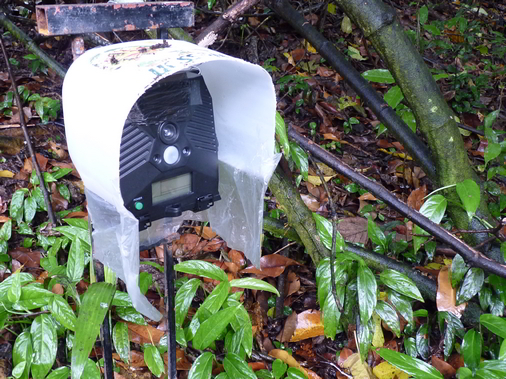
Week 1
Trail camera plans aside, my first weekend visit made me realize that there was a lot of butterfly activity in the area. Many butterflies inhabit forest edge and soon I was finding all sorts of interesting species. Indeed this quickly became the main motivation for spending time out there – the camera could be setup in a matter of minutes but searching for butterflies could easily become an all day affair. The heat, mosquitoes and thorns seem trivial when you can find hidden treasures like these:
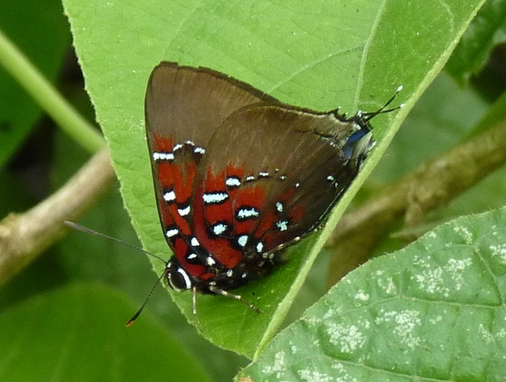
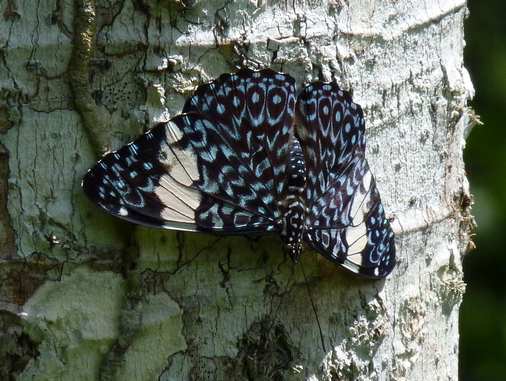
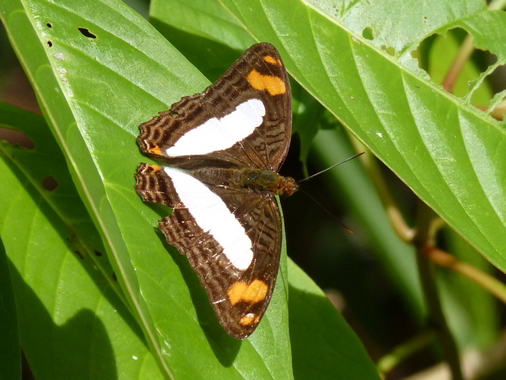
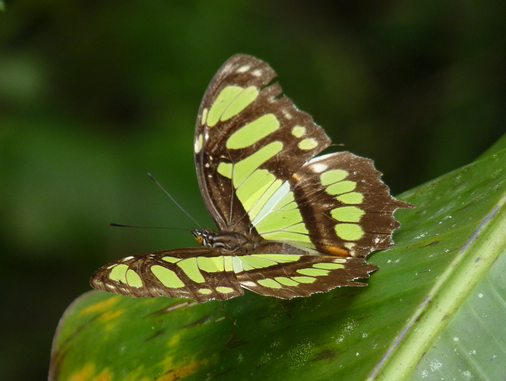
I had decided that I would setup the camera in different spots close to the water’s edge in order to capture a range of habitats. The first site was certainly close to the water however in hindsight it was perhaps not a good choice – it was essentially in the middle of a large patch of Gru-Gru palm (Bactris major). For those of you who don’t know what this palm looks like, it is pretty much just a mass of long, needle like thorns. I didn’t notice it at the time because of my boots but the ground was littered with these thorns as well. Would anything actually live in here? It was too late to move the camera and bait so I had no choice but to leave it and hope for the best.
Week 2
It rained for much of the week and over the next weekend I returned to retrieve the camera and move it to a new site. The images it had captured over the week surprised me.

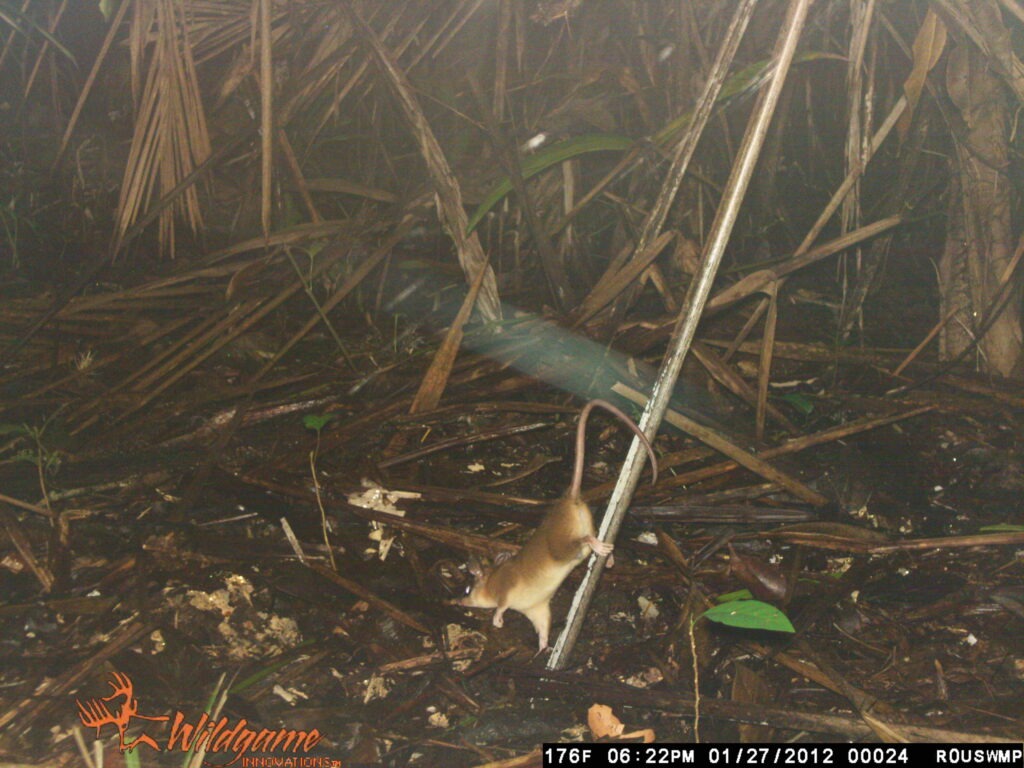
So it seems that wildlife could in fact live in the thorny palm patch. The small mouse opossum was surprising as it is mostly aboreal and would have to spend much of its time off the ground and actually climbing in those thorny palms.
The new site for the camera was a 15 minute walk further into the “bush”. Once again, I was able to find several interesting butterflies.
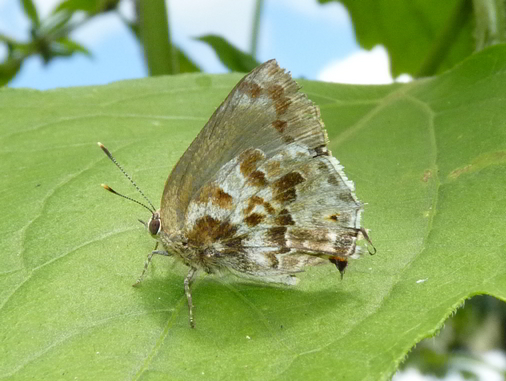
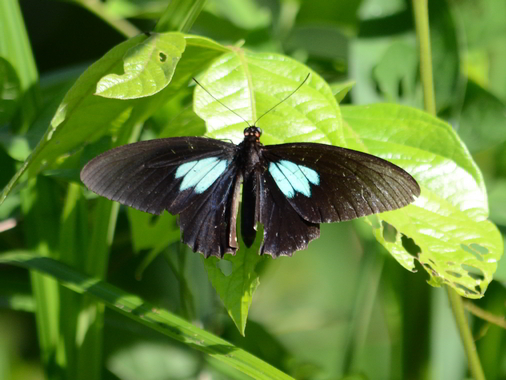
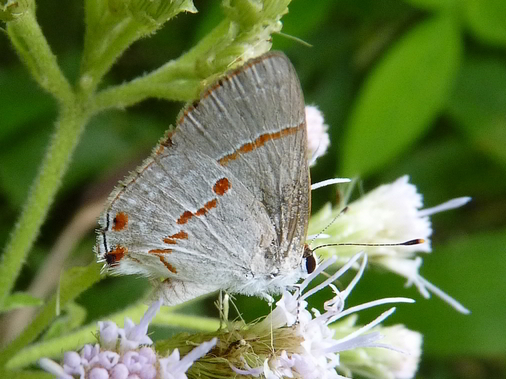
The new camera location was a promising site near the water’s edge which was shaded by tall trees and close to a thick tangle of vegetation with even a few crab burrows here and there. Fingers crossed, I setup and left for the week.
Week 3
The variety of birdlife seen here has not been particularly impressive thus far. But I’m sure something really interesting will eventually turn up some day. In any case it forced me to pay attention to some of our commoner birds.
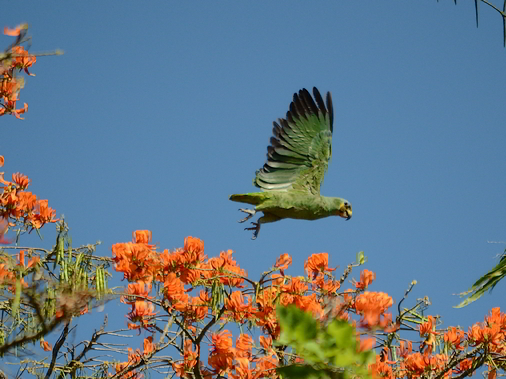
Numerous Orange-winged Parrots (Amazona amazonica) feed in the periphery of the swamp and screeching pairs frequently flew overhead before almost stealthily disappearing into the tree canopy. At one point I spent several minutes underneath a tall mango tree being bombarded from above by half chewed green mangoes – I knew there were parrots up there somewhere but they possess a remarkable ability to just vanish among the leaves when they want to. Eventually an explosion of screeches and flapping wings proved that there was a small flock in there after all.
On another occasion a piercing “crack” alerted me to the presence of a Squirrel Cuckoo (Piaya cayana) on a nearby tree. They are well named on account of their similarity to a squirrel as they gracefully race about the tree branches. It was hidden behind some leaves at the top of a tree however these cuckoos follow a predictable pattern. Starting near the middle of a tree, they will ascend, leaping from branch to branch, until they reach the top. They then glide to a nearby tree, usually near the center, and then begin the process again. The pattern held true and sure enough the bird glided overhead to a nearby tree.
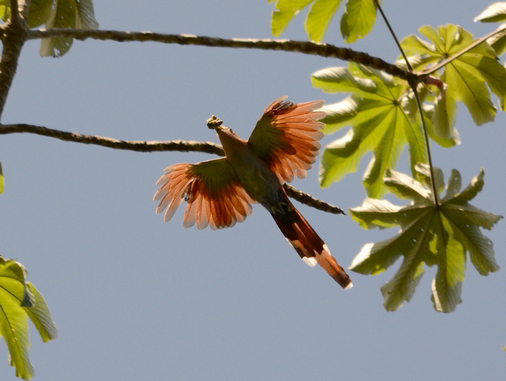
Also overhead, a pair of Gray-headed Kites (Leptodon cayanensis) uttered their mewing, cat-like calls. These large, lovely birds have a characteristic aerial display, referred to as a butterfly display, which involves the birds intermittently performing a series of quick, shallow wing-beats. From a distance the bird appears to be trembling in flight.
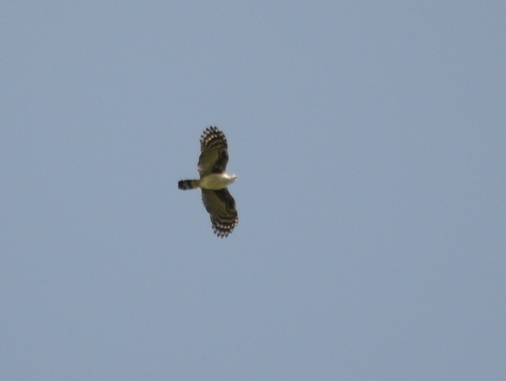
Butterflies once again piqued my interest and the “bush” continued to provide new species for my photographic collection.
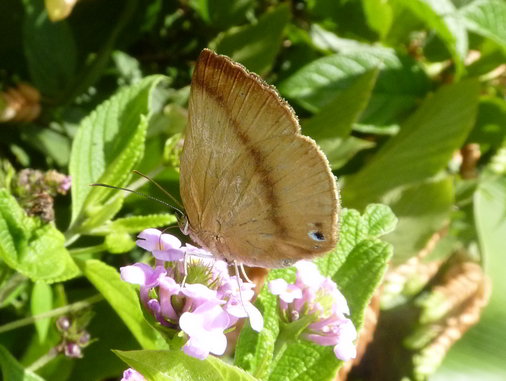
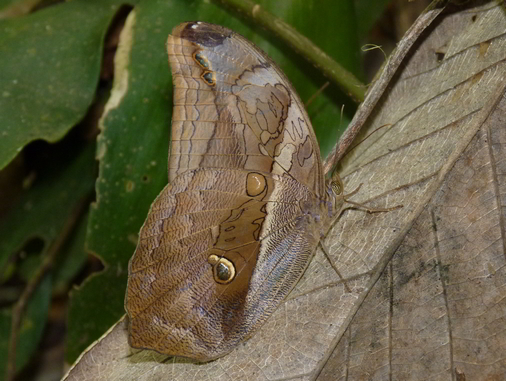
As I approached the trail camera site to retrieve it I noticed that the ground was disturbed. Evidently something large had been there during the week and was very active.
Another Robinson’s mouse opossum (Marmosa robinsonii)
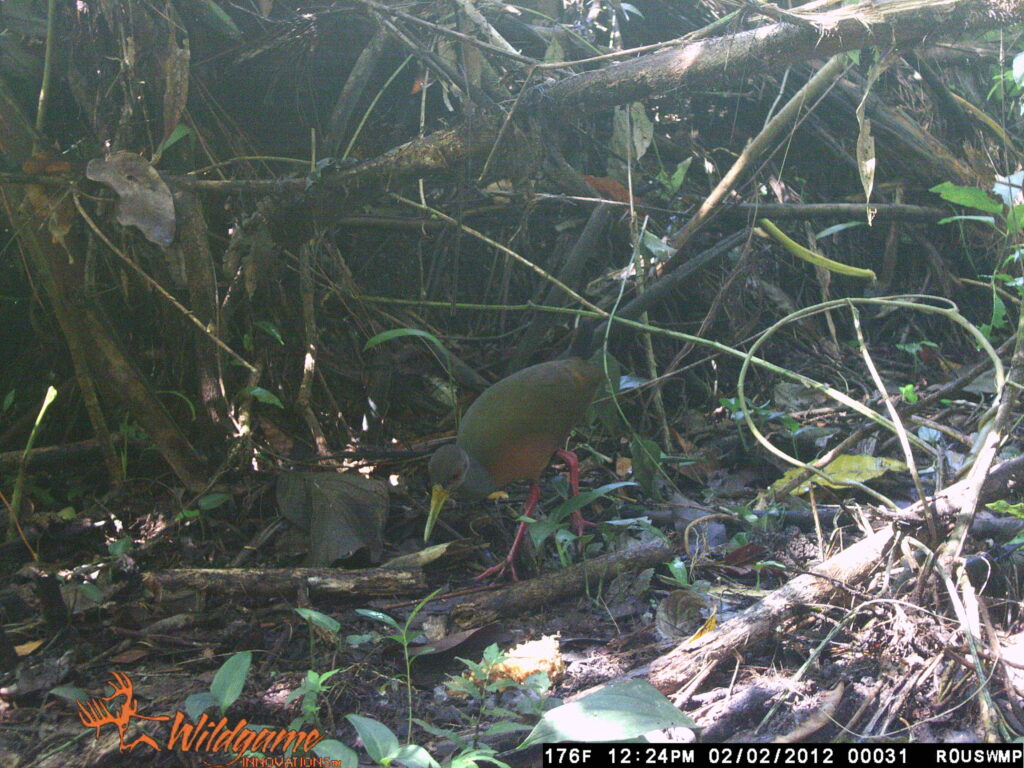
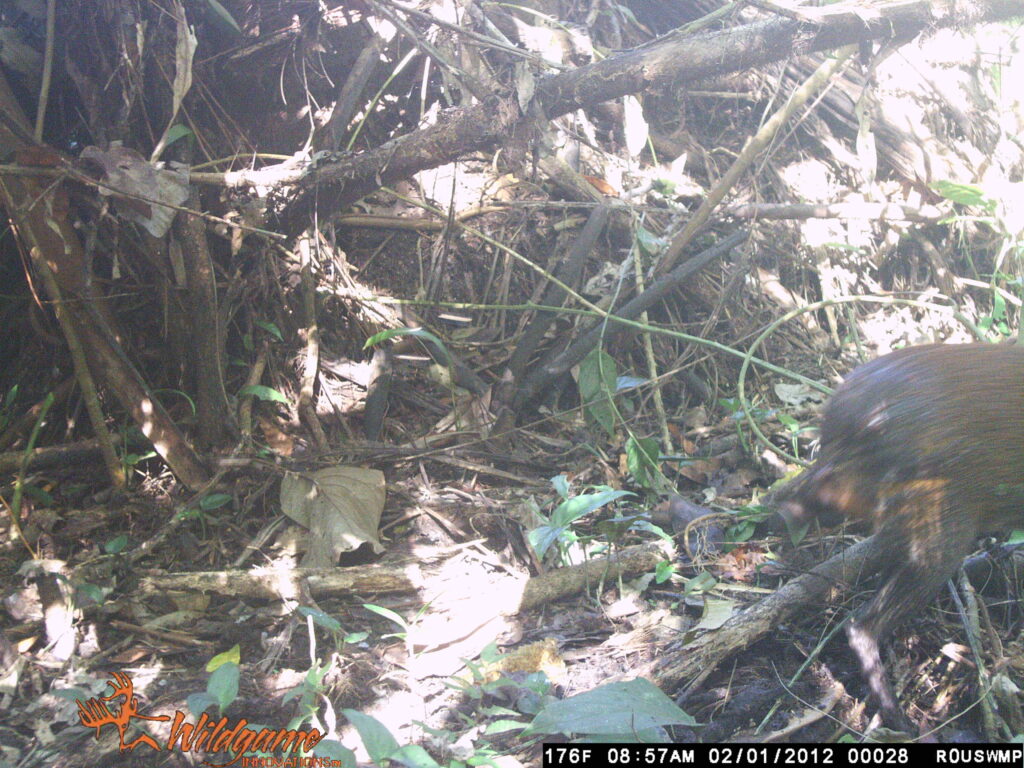
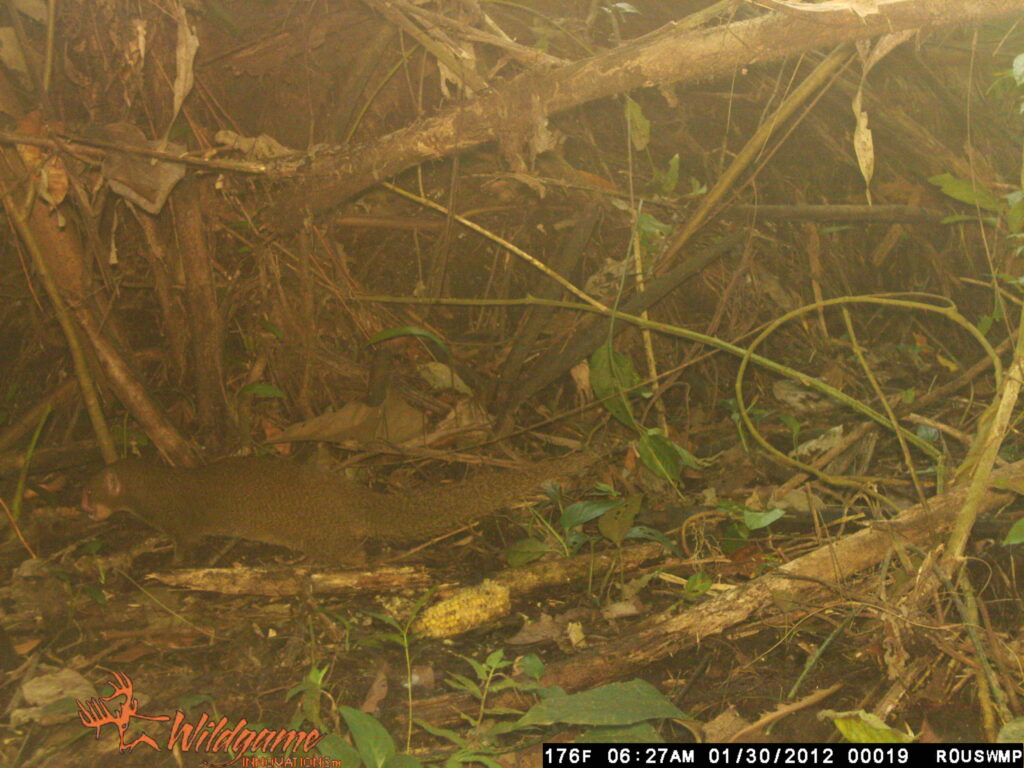
Ah. There’s the culprit. While common in Trinidad, the mongoose was unexpected in such a densely vegetated area as I have always associated them with more open areas or scrub land. Evidently the mongoose had been digging while searching for scraps. I had an even better location in mind for the next site. This site was again close to water but the flat ground, clear of leaf litter, indicated that it was also flood prone. The undergrowth was sparse but the overhead tree cover was thick. This time I buried some of the bait to keep anything that came to feed on it in the area for a longer time. It was then that I made another mistake. Because of the clear undergrowth, I was concerned that some passing woodsman might notice the camera’s white rain shield. To prevent this, I covered the shield with a large leaf. After I returned home it occurred to me that as the leaf dried it would shift slightly, perhaps enough to obscure the view from the camera lens. I would have to wait and see next weekend.
Week 4
The week was mercifully rain free and the long Carnival weekend meant that I could afford to really spend some time exploring. You might think that after all the time I have spent here that I would have explored it all. But there is actually a significant section that I haven’t yet managed to get around to. I blame the butterflies for that. Butterflies are curiously time sensitive. The same patch of flowering shrubs might have different species depending on the time of day and this means that by the time I have walked a certain distance inside the bush it becomes necessary to walk back to the beginning and start over again (needless to say butterfly-watching is time consuming).
Not that I mind. The results are very encouraging.

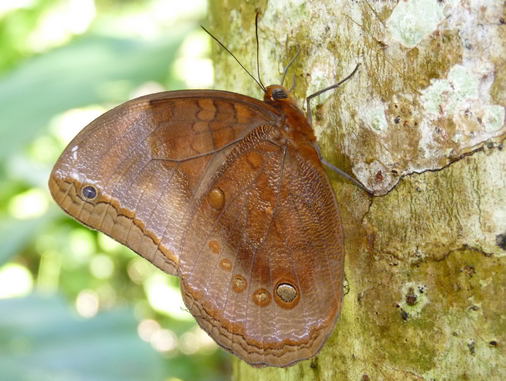
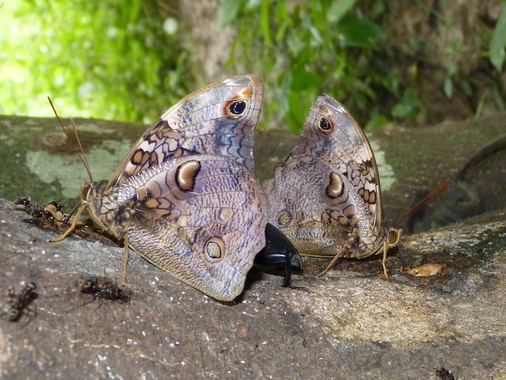
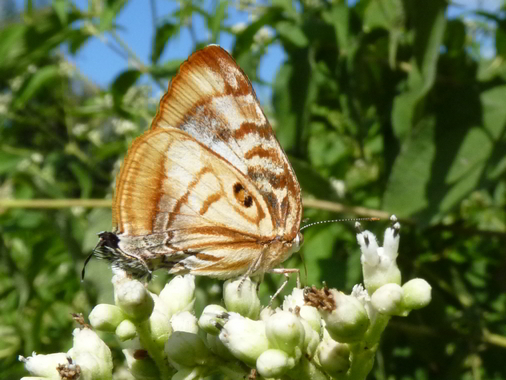
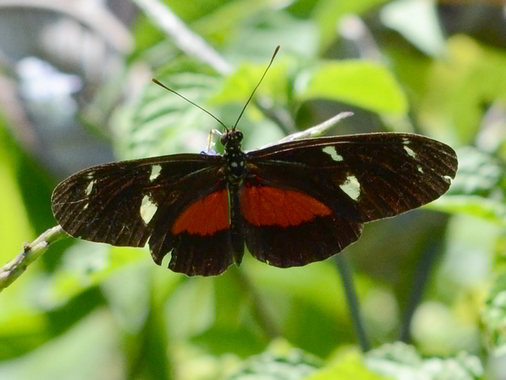
The camera was still firmly in place when I retrieved it. However my fears were confirmed and the camera lens was indeed partially blocked by the leaf. On the bright side something had definitely been digging for the bait. Another mongoose perhaps? Thankfully, the camera had taken numerous images before the leaf got in the way.
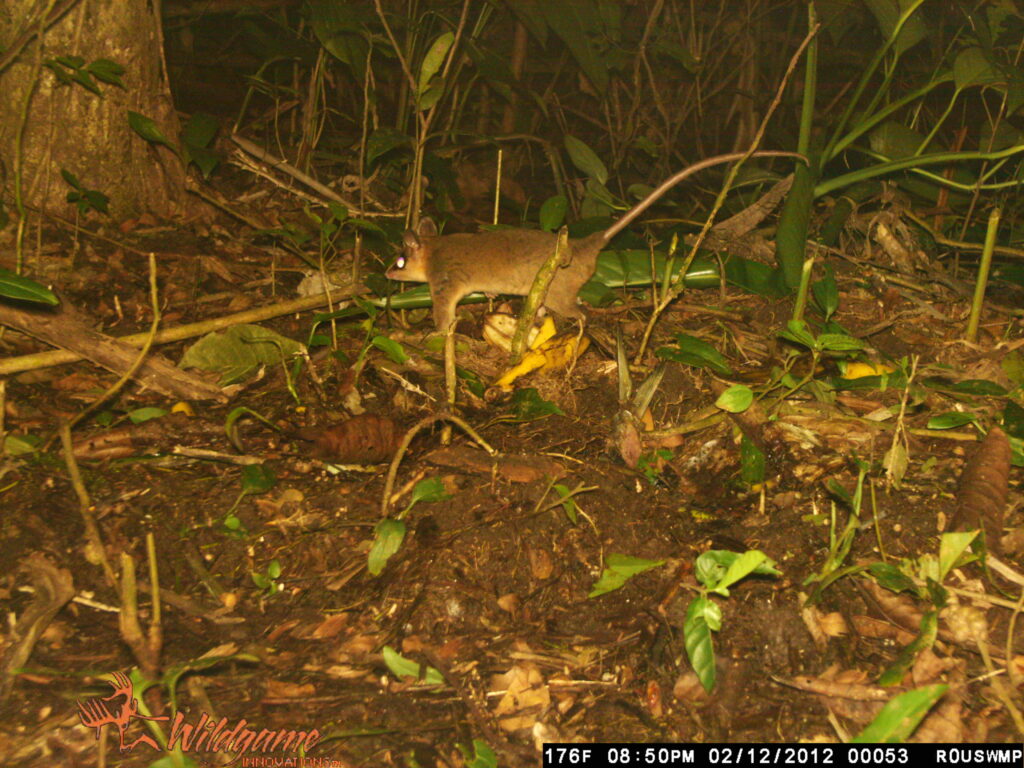

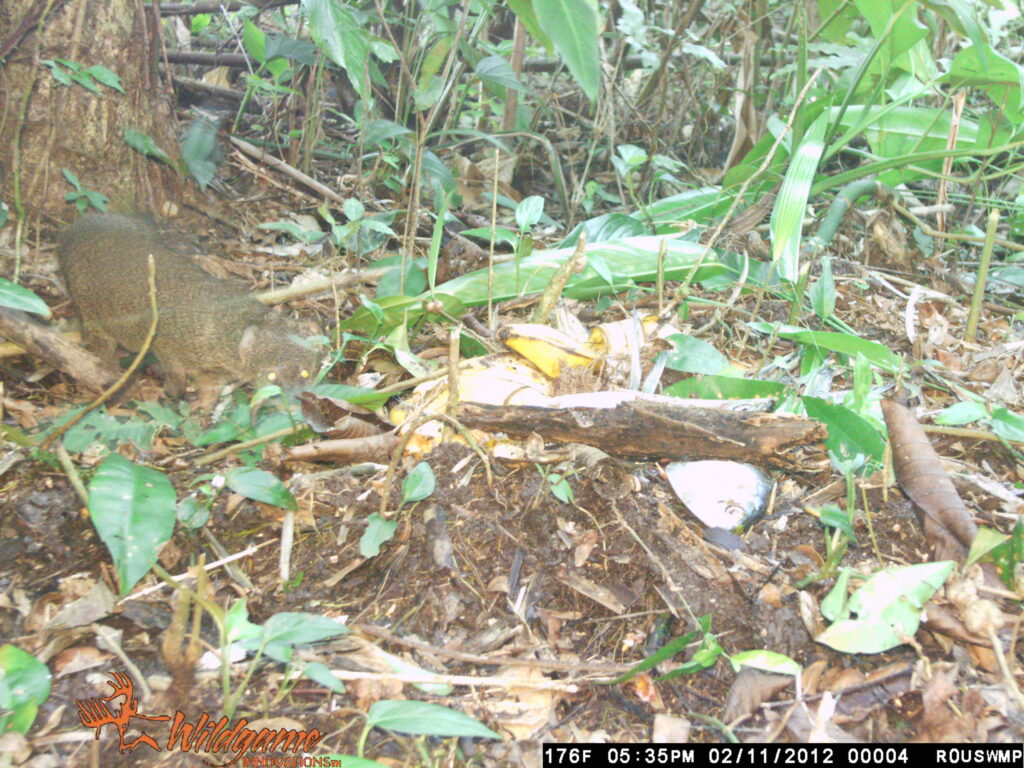
But it wasn’t the mongoose that was digging for the bait.
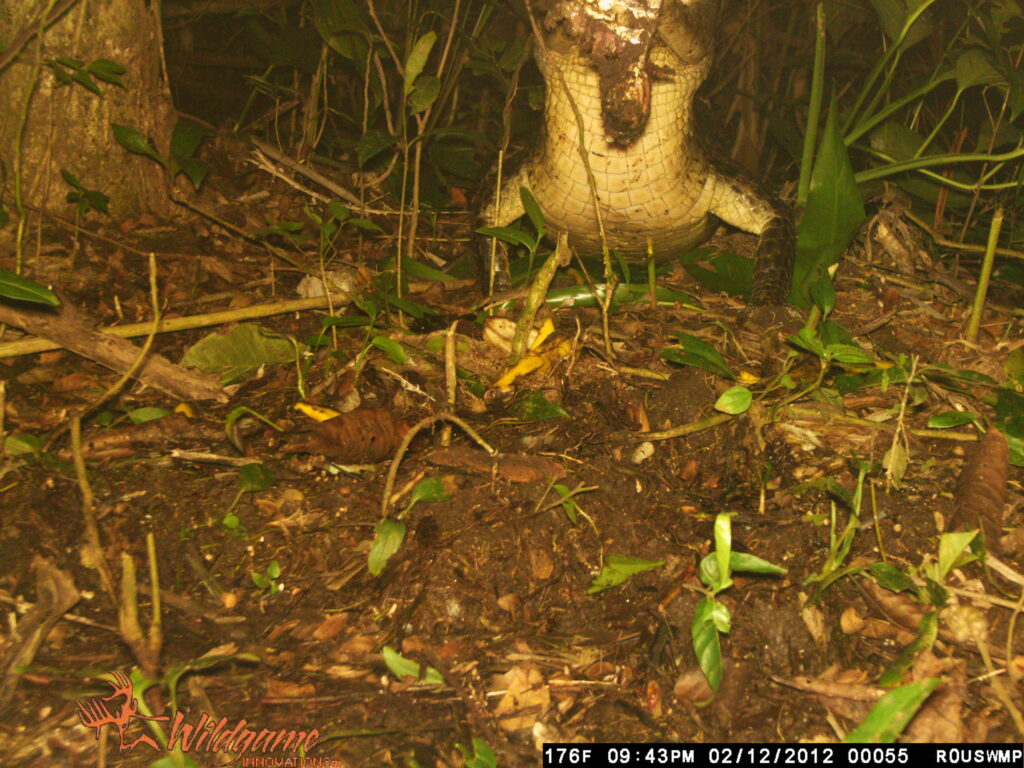
I didn’t expect to see a Caiman but I suppose it shouldn’t be too much of a surprise given the proximity of the swamp. There was one final image that I am unable to figure out. Just before the leaf blocked the lens entirely the camera recorded this image.
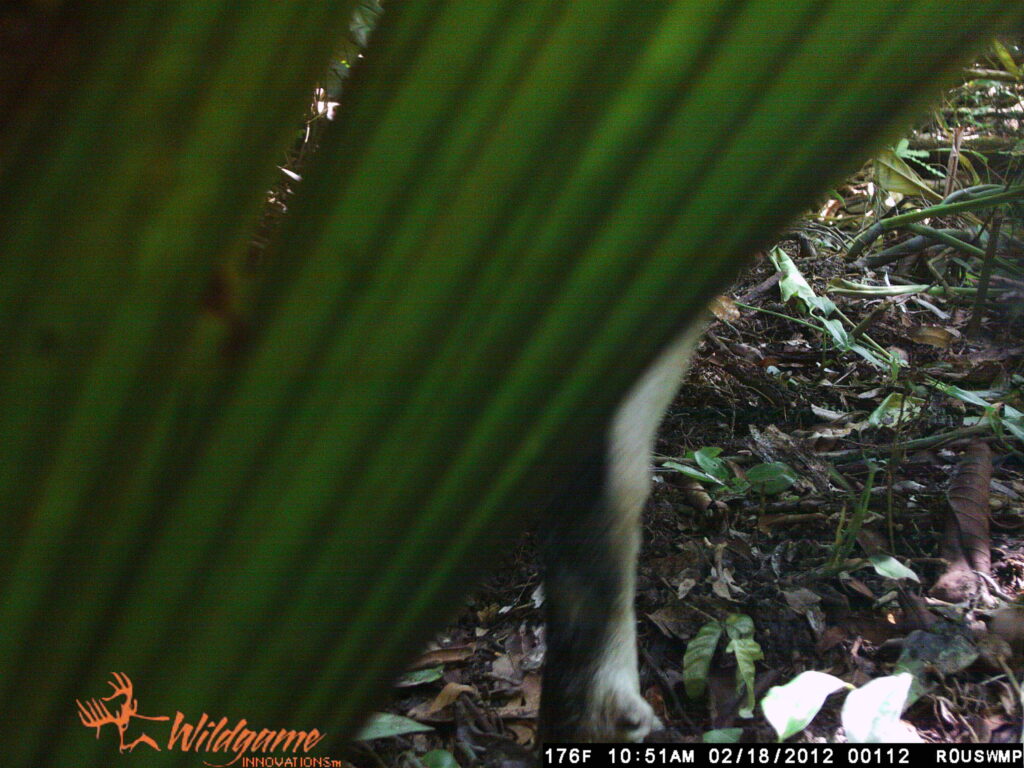
?
It looks like a pale gray leg but I can’t be sure. It seems that Crab-eating Raccoon will have to wait until I reach the mangrove swamps to have its picture taken.
There is something nice about being out there by myself in the heat of the day. Perhaps it is because I work all week in an office that these weekends in the “bush” become necessary. Or maybe it is that being alone in the “bush” for several hours just enables me to clear my mind and focus on my surroundings. Whatever the reason, evidently there are treasures that you can find in the “bush” other than birds, crab-eating raccoons and butterflies. Treasures like solitude and peace.